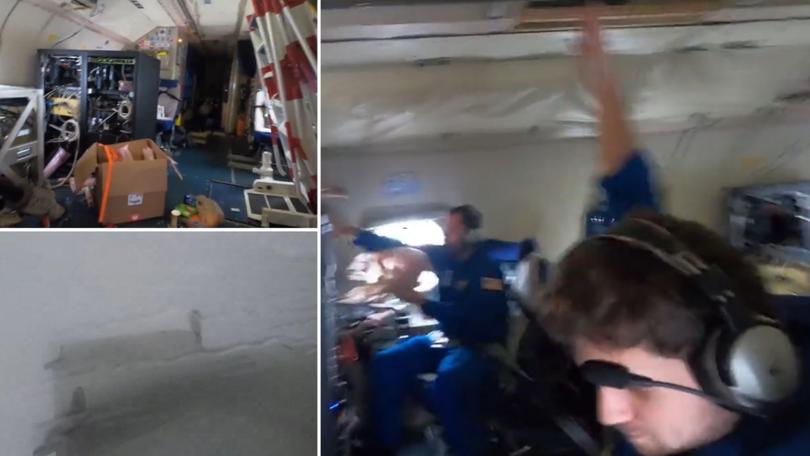‘Bumpy ride’: Terrifying footage shows what it’s like flying through Hurricane Milton

Hurricane hunters have released terrifying footage of their “bumpy ride” in their research plane as it flies directly through Hurricane Milton.
The National Oceanic and Atmospheric Association (NOAA) Aircraft Operations Centre shared footage of the aircraft — named Miss Piggy — violently shaking from heavy turbulence as the crew collected data on the dangerous Category Three storm.
Hurricane Milton, which has lowered in intensity but increased in size, made landfall in Florida around 12.00pm AEDT on Thursday. An estimated 5.9 million people have been evacuated from the Florida coast which is set to be battered by 251km/h winds and dangerous rains.
Sign up to The Nightly's newsletters.
Get the first look at the digital newspaper, curated daily stories and breaking headlines delivered to your inbox.
By continuing you agree to our Terms and Privacy Policy.The NOAA crews routinely fly its Lockheed WP-3D Orion planes into hurricanes to “collect critical data that helps improve forecasts and support hurricane research”.
A video taken from inside the cockpit of ‘Miss Piggy’ shows at least four NOAA researchers battling violent turbulence that sends their research papers and other equipment flying about the plane.
The view from the passenger-side window of the aircraft shows the 1970s plane flying through thick, grey clouds and heavy rain.
“Bumpy ride into Hurricane #Milton on@NOAA WP-3D Orion,” the NOAA Aircraft Operations Center wrote in a post sharing the video to X.
Programs Integration Engineer Nick Underwood was filming the flight, according to The New York Post, but seemed non-plussed by the storm rattling the plane.
“Damn,” he can be heard laughing after a heavy hit of turbulence.
Underwood pointed the camera to the back of the plane where several objects had scattered about the floor due to the turbulence.
“Good God,” Underwood says as he points the camera out the window to show the storm outside.
Further toward the plane, another crew member can be seen gripping an esky tightly. The crew member next to Underwood can be seen trying to tidy his workstation after a hit of turbulence sent equipment flying.
“When you get a chance can you grab my wallet, too?” Underwood asks his teammate, before adding “Gotta keep these pockets zipped!”
While the footage is enough to turn any confident flyer into a nervous wreck, this is just another day at the office for the NOAA hurricane hunters.
NOAA’s two WP-3D Orion aircraft — ‘Miss Piggy’ and ‘Kermit’, named after the Muppet characters — have been collecting data for almost 50 years, NOAA Aircraft Operations Centre Public Affairs Specialist Jonathan Shannon said.
He told The New York Post the missions were essential because forecasters could not get this data about storms “at this scale and resolution any other way”.
“We basically take a weather station to the weather,” he said.
“The best analogy I’ve heard is it is like riding an old wooden roller coaster through a car wash.”
The US’ National Hurricane Centre then uses the data collected by the NOAA researchers to monitor a storm’s location, strength, and speed. Meteorologists also use the data to create forecasts about the track and intensity of the storm.
Milton is the fifth strongest hurricane ever recorded in the US and makes landfall just two weeks after Hurricane Helene cut a path of devastation and killed over 200 people.
Authorities have issued increasingly dire warnings to residents as Milton drew closer, telling locals if they stayed “you will die”. For those who have not listened to warnings, it is now “too late to evacuate”.
